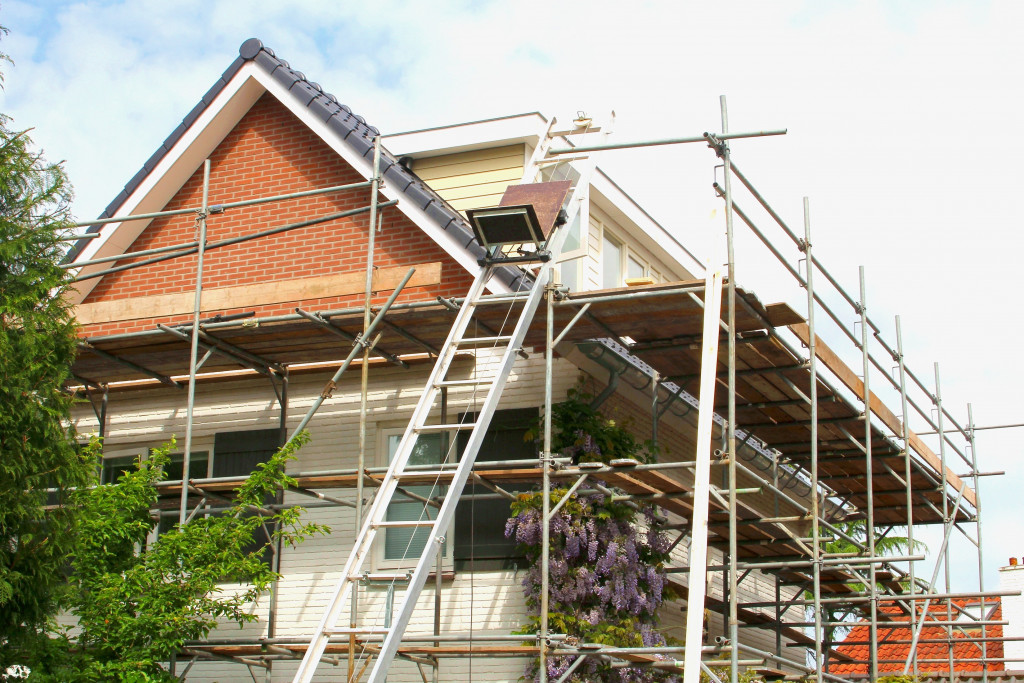In the 90s, the typical timeline of a home renovation was around a year. Now, we can build an entire home within that time frame. So much has changed in thirty years, making home renovations one of the fastest construction projects to complete today.
Technology made this possible. The internet has allowed both homeowners and designers to collaborate more harmoniously than ever. Of course, no home renovation project still goes 100% smoothly all the time, but the process has significantly improved. With communications streamlined, professionals and homeowners can stay up to date with every stage of the renovation. As a result, the project finishes quickly.
That said, let’s explore the specific ways technology changed the way people renovate their homes.
Mobile Apps Helped Homeowners Visualize Their Dream Spaces
Before we had smartphones, we relied on magazines to look for dream home inspirations. Some of us even cut out pictures and posted them on our walls, daydreaming of our future home.
Now, dream home inspirations are just a couple of clicks away. A quick Google search will lead us to thousands of beautiful home photos and home design websites. We can also use Instagram or Pinterest to search. Pinterest is particularly helpful, as it lets us create a board, something a few interior designers find useful.
Architects Can Now Make Digital Design Rendering
Before the era of computer software, architects had to draft home designs by hand. This made the home renovation process much slower because finishing the design alone took a lot of time. Now, architects can present a design rendering — multiple ones, even — in just a few days or weeks.
AutoCAD is the software most architects use. AutoCAD renderings are more accurate than hand-drawn designs. It reduces human error, making it cheaper to apply new ideas, edit, or modify the designs. As a result, both architects and homeowners can save time and money.
Homeowners Can Now Select and Shop for Materials Online
Though physically shopping for materials has never gone out of fashion, doing it online is definitely more convenient. Especially now, with a pandemic limiting our activities outside. Besides, it’s sometimes easier to shop online. It’s time-saving, and we can focus on our intent better. For example, if we’re looking to renovate our bathroom, we can immediately buy high-quality bathroom products because Google or social media took us to a legitimate online store.
On the other hand, if we went to a store, we could easily get distracted by the products in other categories, stretching out the time we dedicated to shopping.
Augmented Reality Helped Homeowners Try Products Virtually

Some online home improvement stores offer an AR feature. It lets users test out a product virtually. We just have to take a photo of the space we want to be furnished, then upload it on the website. Once it appears, we can place a 3D rendering of a furniture piece on the photo. This lets us see whether it fits in the space or not.
AR technology is also the one used in home design apps. These apps let us design a virtual home, with a floor plan and all. We can design each room from the ground up, pick materials and fixtures, and furnish them. Some apps are designed for pros, but amateurs can also find them useful for developing their interior designing skills.
Smart Homes Reinvented Convenience
Just a little over twenty years ago, the pinnacle of convenience was a remote-controlled appliance, like an A/C. Sensor lights existed as well, but not many homes used them. Now, the height of convenience is a whole smart home, with almost everything controllable via voice command or our smartphone.
A smart home works by turning a home into a network, which can connect to our mobile devices like Wi-Fi. With our devices connected to our home, we can control our light switches, electronics, and even door locks wherever we are. And when we get home, muttering “lights on” will automatically activate the sensors and turn on the lights.
New Home Designs and Equipment are More Eco-friendly
Besides LED lights, there are other eco-friendly home equipment and tools nowadays. An alternative energy source is one of those, with solar panels being the most common. Though pricey, solar panels help us save more money in the long run. It significantly reduces our electric bill and minimizes our carbon footprint.
Even the home’s design itself can be eco-friendly now. Green roofs, living walls, and sustainable construction materials are becoming increasingly popular in the industry. There are also modular kitchens and cabinetry, allowing home renovations to generate less waste, and save money and time.
Technology may not always do what’s best for us as a society, but it surely streamlined industries and made work easier for everyone. It gave us more time in our hands, which is far more precious than money.

